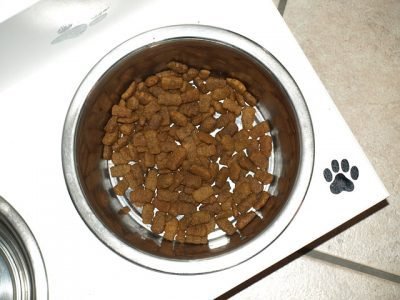 Getting to the pet food section of the grocery store often feels like stepping into a completely different shop unto itself. There’s an overwhelming number of options, and for those of us who aren’t exactly pet nutritionists, this can be pretty confusing. After all, how do we separate the clever marketing from products which truly fulfil the promise of giving our furry friends the nutrition they need?
Getting to the pet food section of the grocery store often feels like stepping into a completely different shop unto itself. There’s an overwhelming number of options, and for those of us who aren’t exactly pet nutritionists, this can be pretty confusing. After all, how do we separate the clever marketing from products which truly fulfil the promise of giving our furry friends the nutrition they need?
A part of it, as with the entirety of consumer culture, is to be a discerning customer, looking beyond product promises to pinpoint the product which meets your specific needs and preferences. Packs of dog food may promise to be the best mix for a specific dog breed, but assuming that picking the ideal dog food depends solely on whether your pup is a Boxer or Dachshund is flawed thinking – rather than dog breed, other factors like your pet’s age, size and individual health conditions determine the type of food they should be fed. If you’re pup is experiencing hypoglycaemia, they’re going to need more calories in their diet, while puppies who’ll grow into lean and large sizes more prone to musculoskeletal disorders would require more moderation in nutrients at an early age so they develop at a healthy rate. Given the unique needs of each pet, and the sweeping claims made by a lot of brands on shelves today, here are a couple of tips handy to keep in mind when shopping for dog food.
Know the technicalities
Whether or not you’re the type to spend a couple of minutes perusing all the tiny text printed on foods during a grocery run, we recommend you make this a practice when purchasing dog food, especially if it’s for the first time or for a brand you’ve not tried before. Look out for the words ‘Complete and balanced’ – this label means the brand meets the Association of American Feed Control Officials (AAFCO)’s requirements for the minimum ratios of nutrients feed should contain to keep a dog properly nourished. While this, along with the nutritional information printed onto dog food packages, won’t give you an idea of the quality of ingredients used, they’re still valid indicators that the food comes with the balance of nutrients a pup needs for a healthy diet. Dog food labelled as clinically tried and tested is another endorsement that it is nutritionally safe and healthy for your pups.
Know what you need
 Before stepping into a grocery store and being accosted by the walls and walls of options available, a convenient way of narrowing it all down is knowing specifically what you’re in the market for in the first place. Dogs don’t only need the protein of meat in their diets – they need a healthy blend of carbs, fiber, vitamins and minerals too, and the best dog foods contain ample amounts of them all to keep your puppy healthy and well-nourished. This does not vary so much from breed to breed as it does depending on the age and size of your dog, and their general medical wellbeing or condition. For instance, a good indicator for picking the right food for your dog is checking what life stage a particular brand is intended for – dog foods are available for adults, puppies and all life stages. Meanwhile, the larger sized kibbles bigger dogs can chow down with ease can pose a choking hazard for puppies and smaller breed dogs, so look out for smaller kibble for the latter.
Before stepping into a grocery store and being accosted by the walls and walls of options available, a convenient way of narrowing it all down is knowing specifically what you’re in the market for in the first place. Dogs don’t only need the protein of meat in their diets – they need a healthy blend of carbs, fiber, vitamins and minerals too, and the best dog foods contain ample amounts of them all to keep your puppy healthy and well-nourished. This does not vary so much from breed to breed as it does depending on the age and size of your dog, and their general medical wellbeing or condition. For instance, a good indicator for picking the right food for your dog is checking what life stage a particular brand is intended for – dog foods are available for adults, puppies and all life stages. Meanwhile, the larger sized kibbles bigger dogs can chow down with ease can pose a choking hazard for puppies and smaller breed dogs, so look out for smaller kibble for the latter.
Size also plays a big part in determining your dog’s ideal diet. The nutritional requirements for larger breed dogs differ in a couple of distinct ways compared to smaller dogs. While you may be forgiven for thinking that a dog that remains puppy-sized through his or her whole life may not have to be fed as much, smaller breed dogs, especially Toy breeds, like Chihuahuas, actually require more calorie-rich nutrition and have to be fed a handful of times through the day. Their fast metabolism means they burn up food faster, and not feeding them energy-rich foods at regular intervals could lead to low blood sugar, which could evolve into a series of health complications.
On the other hand, large dog breed owners can vouch for the rapid growth spurts their pups undergo, growing faster and for longer than smaller breeds tend to. Too much nourishment, spurring on too much growth in too short a time, can lead to a bunch of musculoskeletal problems and development orthopaedic disease (DOD). In fact, larger breeds like German shepherds are more widely known for coming down with conditions like arthritis or hip dysplasia as they age and mature. Compared to smaller breeds of dogs, then, larger breed puppies are better off with diets with lower amounts of nutrients like fats, calcium and vitamin D. When checking the nutritional information breakdown of dog food for your large breed pups, make sure these ingredients aren’t in predominant quantities or stacked at the top of the list – typically, the ingredients listed at the top dominate in proportion in any commercially produced food.
Check out the ‘guaranteed analysis’ of the brands you are considering – these give a breakdown of the percentages of different nutrients contained within the foods, including crude proteins and fats. Keep an eye out also for specific entries on your ingredient list – large amounts of fillers like wheat, corn and soy are plant proteins dogs are not programmed for but are often incorporated in cheaper dog foods, while specific entries for different types of meat like chicken, turkey, duck etc. is a better indicator of quality than vague entries for just poultry.
Know how much you need
 Overfeeding is a serious issue when it comes to pets – overfeeding can promote a plethora of health risks, including diabetes, kidney and heart disease, cancer and high blood pressure, in large and small breeds alike. Usually, following the serving measures specified on your pack of dog food gives you a good idea of how much you should be feeding your pups in a go, moderated by monitoring whether your pup appears to be gaining or losing weight following these directions. If you’re not convinced or don’t wish to take any risks, it’s always highly recommended to get expert advice from your vet.
Overfeeding is a serious issue when it comes to pets – overfeeding can promote a plethora of health risks, including diabetes, kidney and heart disease, cancer and high blood pressure, in large and small breeds alike. Usually, following the serving measures specified on your pack of dog food gives you a good idea of how much you should be feeding your pups in a go, moderated by monitoring whether your pup appears to be gaining or losing weight following these directions. If you’re not convinced or don’t wish to take any risks, it’s always highly recommended to get expert advice from your vet.
Know how much to pay
The rule-of-thumb that cheaper consumer goods usually come with a quality trade-off holds true here as well – while the most expensive choice on the shelves might not boast the best quality either, we strongly recommend against reaching for the cheapest products available.
And finally –
Don’t hesitate to ask for help from your vet. A professional who is better versed in the unique nutritional requirements of a pet based on his or her unique health profile is arguably the most reliable source to consult about exactly what type and amount of nutrition your dog needs. Vets are also likely to have specific brands they would endorse from experience and to complement your dog’s individual lifestyle – this helps cut through the clutter and narrow your options down to a more manageable handful.